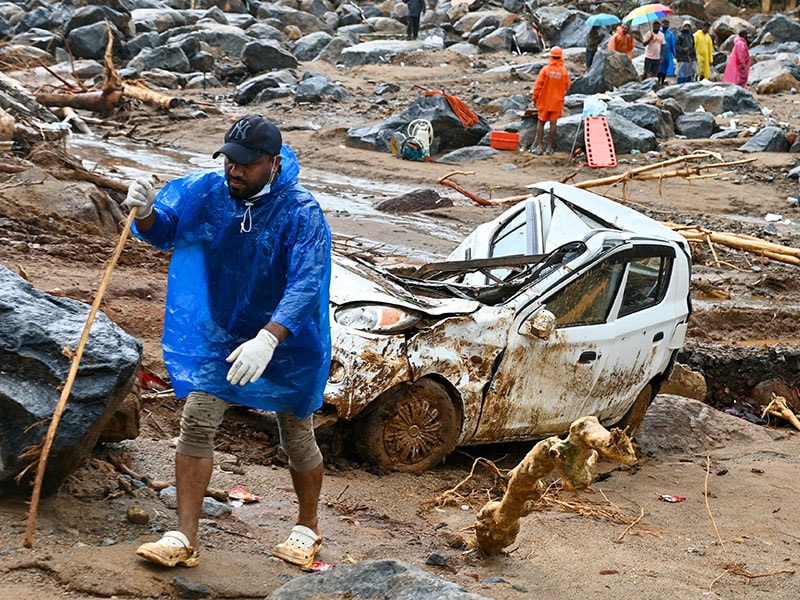
Climate change fuelled deadly Kerala landslides, say scientists
Monsoon rains battered the southern coastal state of Kerala and triggered landslides on July 30, burying homes and residents in Wayanad district under tonnes of rock and soil
Image: Idrees Mohammed / AFP A man walks past a damaged vehicle after the landslides in Wayanad on August 1, 2024. - Indian rescue crews scoured mud-caked tea plantations and villages on August 1 with little hope of finding more survivors from landslides that killed around 200 people.
A man walks past a damaged vehicle after the landslides in Wayanad on August 1, 2024. - Indian rescue crews scoured mud-caked tea plantations and villages on August 1 with little hope of finding more survivors from landslides that killed around 200 people.
Climate change played a key factor in torrential rains in India that triggered catastrophic landslides killing at least 200 people last month, a group of scientists said Wednesday.
Monsoon rains battered the southern coastal state of Kerala and triggered landslides on July 30, burying homes and residents in Wayanad district under tonnes of rock and soil.
World Weather Attribution, a network of scientists who have pioneered peer-reviewed methods for assessing the possible role of climate change in specific extreme events, said the link between the intense rainfall and a warming planet was clear.
"The landslides... were triggered by a burst of rainfall that was made about 10 percent heavier by human-caused climate change," the WWA analysis by 24 scientists said, noting more than 140mm (5.5 inches) of rain fell in a single day.

















